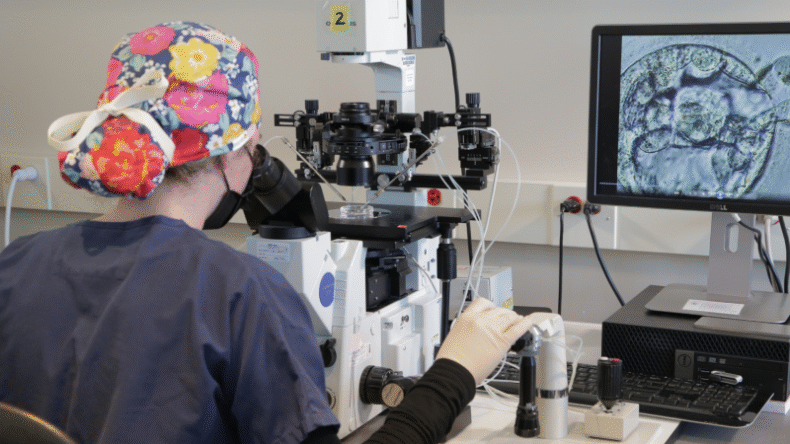A new mandate signed into California law guarantees IVF coverage for those under their large group, fully insured health plans, including LGBTQIA+ people and single parents by choice. Here’s what to know if you live in the Golden State and are considering fertility care.
West Coast is leading the way, especially in fertility care.
Senate Bill (SB) 729 is a new mandate signed into California law by Governor Gavin Newsom that covers IVF treatment for individuals who are insured by their large employer. The mandate is inclusive by design, extending coverage to LGBTQIA+ individuals, single parents by choice, and others historically left out of fertility benefits.
So, what does SB 729 mean for you? When does it take affect? Here are the answers to all that and more that you may be wondering if you’re considering fertility treatment in California:
What is SB 729?
Senate Bill 729 is a California law mandating that certain health insurance plans cover infertility diagnosis and treatment, including in vitro fertilization (IVF). It broadens the definition of infertility to include nonmedical reasons, such as same-sex relationships and single parents by choice, to make fertility care more inclusive.
What is covered under SB 729?
The law requires coverage for infertility diagnosis and treatment, including up to three completed egg retrievals and an unlimited number of embryo transfers, following ASRM single embryo transfer (SET) guidelines. It also mandates coverage for medically necessary fertility preservation procedures, such as those needed before chemotherapy. Elective fertility preservation is not covered.
Who is included?
The mandate applies to fully insured large group employers with 101 or more employees. It does not apply to small group employers, self-funded plans, or religious organizations.
When does it take effect?
SB 729 officially starts January 1, 2026 or later. Some people, including state employees (CalPERS), will see coverage begin January 1, 2027. Contact your HR department to learn more about when you can expect to see changes in your coverage.
Should I wait until I’m covered to schedule fertility treatment?
Fertility care is often time-sensitive, so beginning treatment as soon as you’re able to is typically recommended. CCRM is committed to supporting access to care and to being transparent about costs, which is why each patient is assigned a financial counselor who will help you understand your payment options and current benefits, as well as prepare you for potential coverage changes.
What else should I know?
Specific clinical requirements for coverage are still being finalized. We encourage you to speak with your employer and insurance provider to understand any changes to your insurance plan, as well as your current benefits.
Key takeaways:
SB 729 is a new California law as of 2025 that guarantees IVF coverage for residents who are fully insured under their large group health plans. The mandate is inclusive, also covering the costs of fertility care for LGBTQIA+ people and single parents by choice. Up to three completed egg retrievals and unlimited embryo transfers are paid for under this mandate, as well as medically necessary egg freezing, such as for patients who have cancer.
SB 729 could take until January 1, 2026 to take effect, but fertility treatment is time-sensitive and often should not be put off. Get in touch with our team at CCRM Fertility to discuss your personalized treatment plan, as well as your financing options.
Book your initial consultation with one of our California CCRM fertility specialists at CCRM Newport Beach or CCRM San Francisco.






